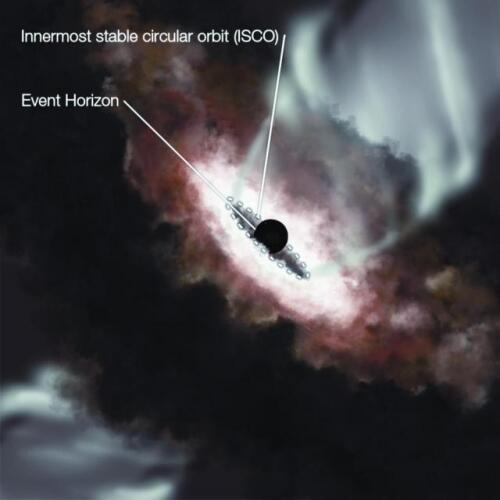WATERLOO, Ont. (Wednesday, Oct 3, 2012) – For the first time, researchers have determined where the energetic jets of matter and radiation that some black holes emit originate and how their existence relies on the speed at which the black holes spin. The jets are powerful enough to inhibit the growth of galaxies, so these findings may help scientists further understand how galaxies formed and grew.
Professor Avery Broderick, a theoretical astrophysicist in the Department of Physics and Astronomy at the University of Waterloo, is part of the Event Horizon Telescope (EHT) team, an international consortium of researchers, whose latest findings appear in the current issue of the journal Science. Broderick's role in this project was to assist in the interpretation of the data gathered from the black hole that is 7 billion times the mass of the sun and at the centre of the nearby galaxy M87.
"These are some of the highest-resolution observations ever recorded," said Broderick. "The data tells us the size of the region launching the black hole jet, the narrow outflow of particles and radiation travelling at nearly the speed of light. For the first time, we are able to measure the size of the jet-launching region."
Nearly all galaxies have a supermassive black hole at their centre, but not all produce jets. Scientists are still trying to determine why that is, and how such jets form. The EHT team's observations confirmed what theorists have only been able to speculate so far: there is a connection between the speed at which the black hole spins and the presence of black hole jets.
"This is fantastic," said Broderick. "This is the first empirical evidence that this is true."
It is possible, he says, that the rotation of the black hole powers the energetic jets. However, the matter that falls into the black hole and subsequently never escapes could provide an alternate mechanism. Learning why some black holes have jets and where they occur in proximity to the event horizon–the invisible boundary inside of which not even light can escape–is critical to understanding their impact on intergalactic scales. Resolving the material in the region immediately surrounding the horizon may even lead scientists to a greater understanding about gravity.
"The next steps for the EHT will be to grow," said Broderick. "The team made these observations using a continent-sized array of radio telescopes at only four observatories."
These telescopes are at three sites in the United States: the Arizona Radio Observatory's Submillimeter Telescope (ARO-SMT), the Combined Array for Research in Millimeter-wave Astronomy (CARMA), the James Clerk Maxwell Telescope (JCMT) and the Submillimeter Array (SMA). In the future, the EHT will add the Atacama large Millimeter/submillimeter Array (ALMA), now under construction in Chile, dramatically improving its ability to study the properties and physics of black holes.
More than 30 researchers from six countries make up the Event Horizon Telescope team. Professor Shep Doeleman at the Haystack Observatory at MIT leads the project. Broderick is the only scientist representing a Canadian university. For more information on the Event Horizon Telescope project, please visit http://www.eventhorizontelescope.org.










